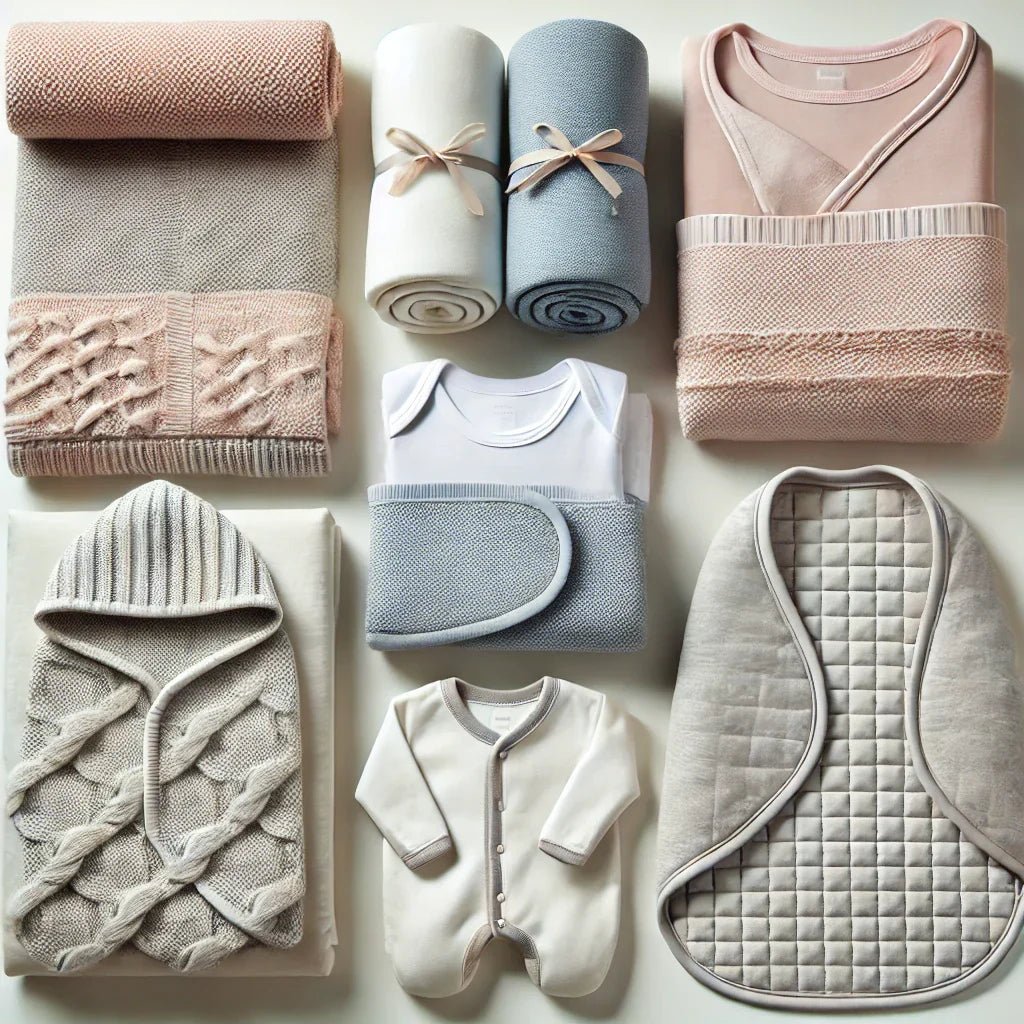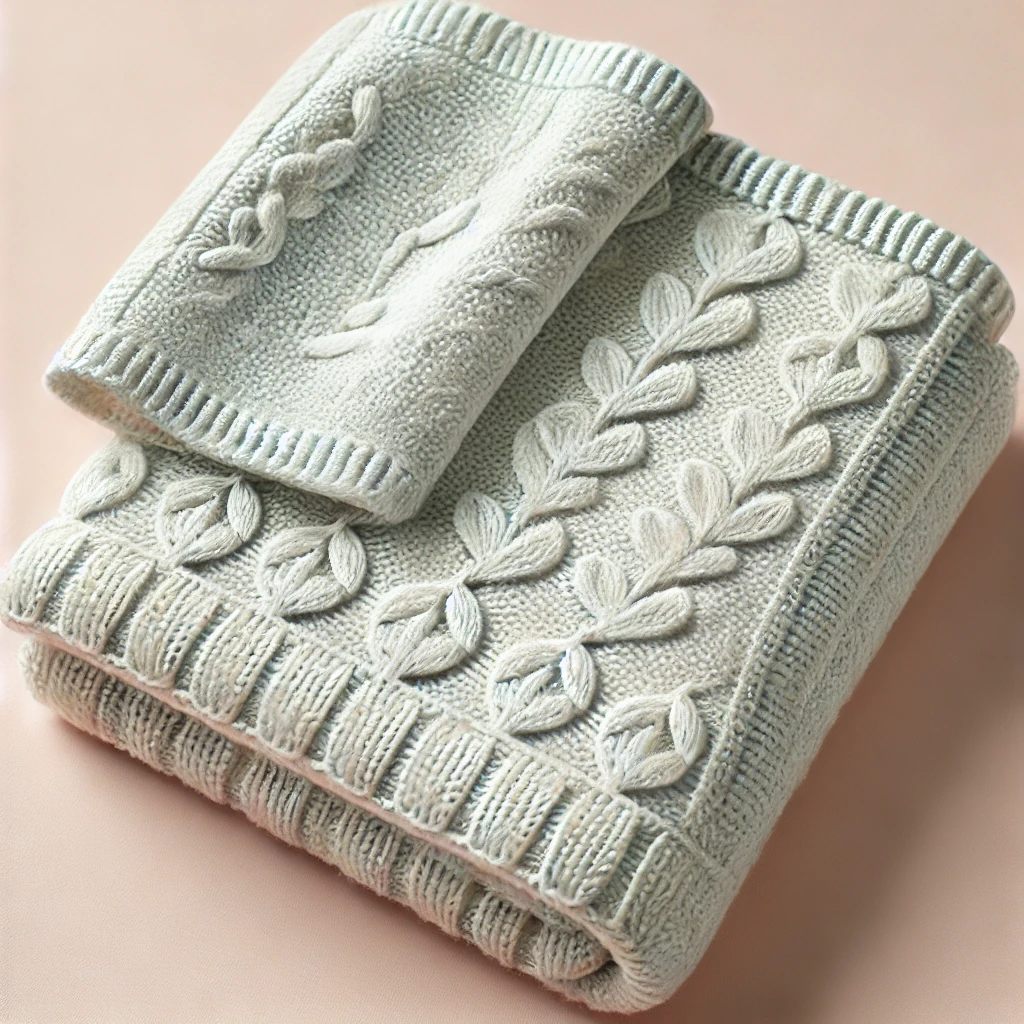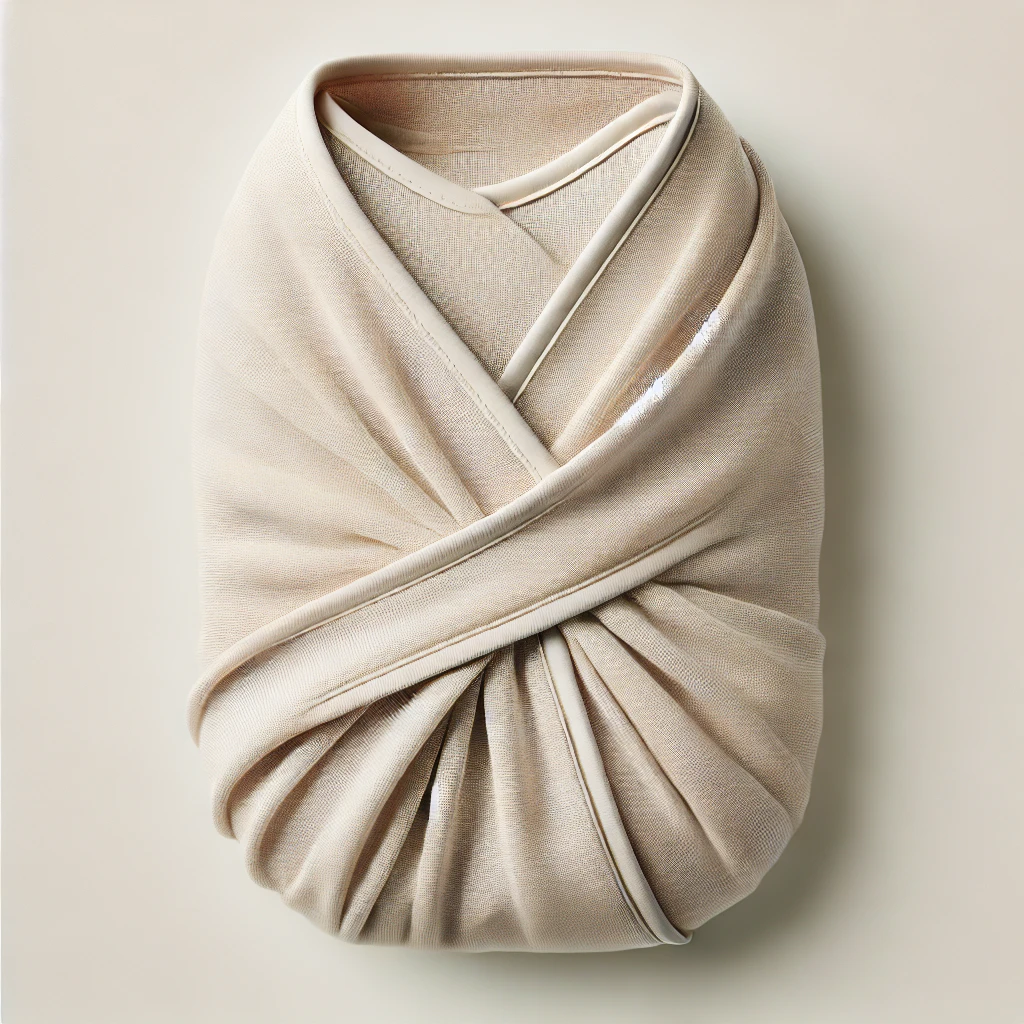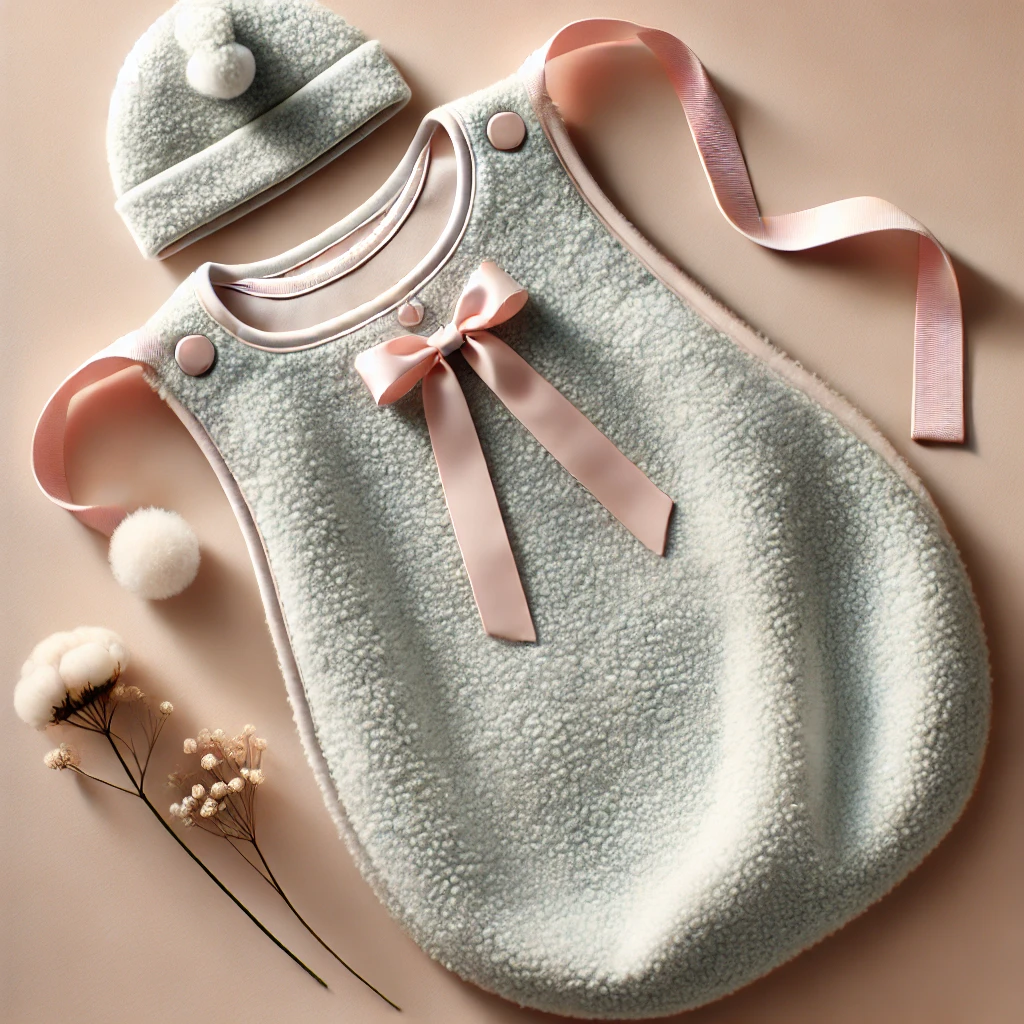
The Essential Guide to Blankets and Newborns: Safety Tips for Parents
The Essential Guide to Blankets and Newborns: Safety Tips for Parents
Have you ever wondered if your baby is sleeping as safely as possible? With so much advice about baby sleeping habits, it can be overwhelming to determine the best way to keep your little one both warm and secure. Understanding the risks of Sudden Infant Death Syndrome (SIDS) and choosing the right baby blankets can make all the difference in ensuring your sleeping baby safe.
Key Takeaways: Blankets and Newborns
-
Always place your baby on their back for sleep to reduce the risk of SIDS.
-
Use wearable blankets, cellular blankets, or a sleep sack instead of loose blankets.
-
Keep the baby’s sleeping area free of pillows, soft bedding, and stuffed animals to ensure a safe sleeping environment.
-
Follow guidelines for safe baby sleep to ensure a secure sleeping environment.
Ensuring a safe sleeping environment for your newborn is one of the most important responsibilities of a parent. With concerns about Sudden Infant Death Syndrome (SIDS) and other sleep-related risks, understanding the right use of baby blankets and sleep accessories can help create a comfortable sleep environment while keeping your baby safe.
The Risk of Sudden Infant Death Syndrome and Safe Sleeping Practices
One of the leading concerns for parents is the risk of SIDS, also known as cot death. The American Academy of Paediatrics (AAP) policy explained that placing a baby on their back for night-time sleep and naps can reduce the risk of SIDS. Additionally, keeping the baby’s sleeping area free of soft bedding, pillows, and stuffed animals can significantly lower the risk of sudden infant deaths. Monitoring your baby sleeps and ensuring they are in a safe sleep environment can significantly reduce the risk of SIDS.

Choosing the Right Baby Blankets for Your Baby
When selecting a perfect baby's blanket, opt for cellular blankets, lightweight blankets, or wearable blankets, such as a sleep sack or swaddle wraps. These options ensure the baby feels secure without the dangers associated with loose bedding. A knitted blanket made from natural materials like cotton or wool can provide warmth while allowing airflow to prevent overheating.
Setting Up a Safe Sleeping Area
A firm mattress with a fitted sheet is essential for a safe sleeping environment. Avoid loose blankets or placing two blankets on your baby, as these can pose a choking hazard or increase the risk of SIDS. Instead, consider a Moses basket, baby’s cot, or crib with a firmly tucked good blanket that doesn’t cover the baby’s head.

How to Keep Your Baby Warm Safely
Keeping your baby warm is crucial, but too much heat can be dangerous. Instead of piling on blankets, dress your baby in baby’s clothing suited for the season. Wearable blankets or a sleeping bag are safer alternatives to traditional blankets and newborns sleeping together. Always check your baby’s temperature by feeling their baby’s skin on the back of their neck or chest rather than their hands or feet.
Reducing Risks While Co-Sleeping
While some parents choose to co-sleep, it is crucial to follow safety precautions to reduce the risk of accidents. A crib mattress in the same room as parents is recommended for the first six months. If your baby falls asleep in a car seat, transfer them to a crib as soon as possible to maintain a safe sleep position.
When to Stop Swaddling
Swaddling can help a sleeping baby feel secure, but knowing when to stop swaddling is essential. As soon as a baby begins to roll over, swaddling should be discontinued to prevent suffocation. At this stage, transitioning to a sleep sack or wearable blankets can provide security without restricting movement.
Safe Travel Practices
When traveling with your baby, it’s essential to maintain safe sleep practices to reduce the risk of SIDS. Here are some tips to ensure a safe sleeping environment for your baby while on the go:
-
Always place your baby on their back to sleep, even in a car seat or stroller.
-
Use a firm and flat mattress in a portable crib or playpen to create a safe sleeping environment.
-
Keep the sleeping area free from loose objects, such as toys, blankets, and pillows, to avoid any suffocation hazards.
-
Avoid using soft bedding, such as blankets or pillows, in the car seat or stroller to reduce the risk of SIDS.
-
Dress your baby in light and breathable clothing to avoid overheating and ensure they stay comfortable.
-
Consider using a sleeping bag or swaddle to keep your baby warm and secure without the risks associated with loose bedding.
-
Always check the temperature of the car or room to ensure it’s comfortable for your baby, preventing overheating or chilling.

Dressing Your Baby for Sleep
Dressing your baby for sleep is crucial to maintain a comfortable sleep environment and reduce the risk of SIDS. Here are some tips to dress your baby for sleep:
-
Dress your baby in light and breathable clothing, such as cotton or muslin, to keep them comfortable.
-
Avoid overdressing your baby, as this can increase the risk of overheating, which is a known risk factor for SIDS.
-
Use layers of clothing to regulate your baby’s body temperature effectively.
-
Consider using a sleeping bag or swaddle to keep your baby warm and secure without the dangers of loose bedding.
-
Avoid using hats or hoods, as these can increase the risk of overheating and pose a suffocation hazard.
-
Keep your baby’s head and face uncovered to reduce the risk of SIDS and ensure they can breathe freely.
Introducing a Blanket
Introducing a blanket to your baby’s sleep environment can be a significant milestone, but it’s essential to do it safely. Here are some tips to introduce a blanket to your baby:
-
Wait until your baby is at least 1 year old before introducing a blanket to their sleep environment.
-
Choose a lightweight and breathable blanket, such as one made from cotton or muslin, to ensure your baby stays comfortable without overheating.
-
Avoid using soft bedding, such as pillows or loose blankets, in the baby's crib to reduce the risk of suffocation.
-
Place the blanket no higher than chest level and tuck it in around the mattress in the crib to prevent it from covering your baby’s head.
-
Consider using a sleeping bag or swaddle instead of a blanket to keep your baby warm and secure without the risks associated with loose bedding.
-
Always check the temperature of the room to ensure it’s comfortable for your baby, preventing overheating or chilling.
By following these guidelines, you can introduce a blanket safely and ensure your baby has a comfortable and secure sleep environment.

Final Thoughts
Providing warmth, security, and a comfortable sleep environment is possible while ensuring your sleeping baby safe. Follow these guidelines, avoid loose blankets, and always prioritize your baby’s well-being over aesthetics when selecting baby blankets. By being informed and vigilant, you can help reduce the risk of infant deaths and promote a safer sleep routine for your little one.
Frequently Asked Questions
Is it safe to put a blanket on a newborn?
No, it is not recommended to place a loose blanket on a newborn. Loose blankets increase the risk of SIDS by posing a suffocation hazard. Instead, use a sleep sack, cellular blanket, or wearable blankets to keep your baby warm safely.
Is it okay for a newborn to sleep without a blanket?
Yes, newborns can sleep safely without a blanket. To keep them warm, dress them in appropriate baby clothing and use a wearable blanket or sleeping bag instead of loose bedding.
How do I keep my newborn warm at night?
Keep your baby warm by dressing them in layered clothing appropriate for the room temperature. A wearable blanket or sleeping bag provides warmth without the dangers of loose blankets. Always check your baby’s temperature by feeling their chest or neck rather than their hands or feet.
What blanket should I use for a newborn at night?
The safest option for a newborn is a cellular blanket, wearable blanket, or sleep sack. These provide warmth while reducing the risk of suffocation. If using a knitted blanket, ensure it is firmly tucked and does not cover the baby’s head.





